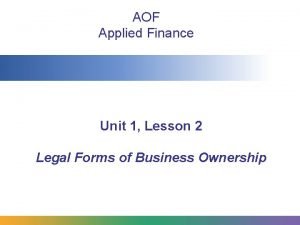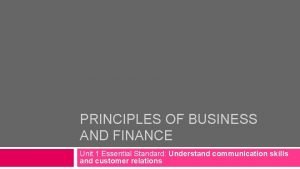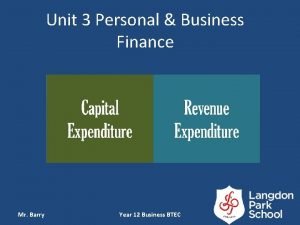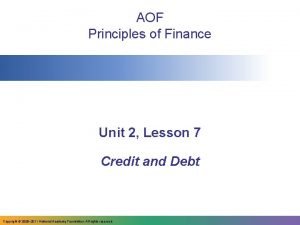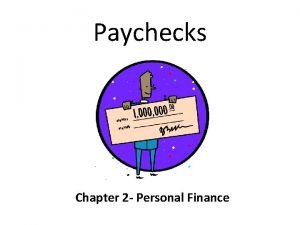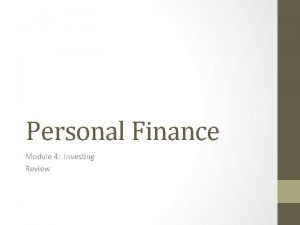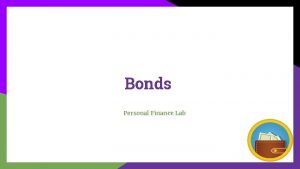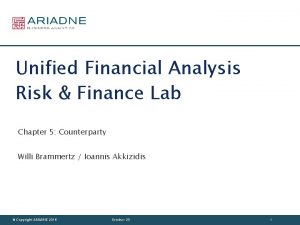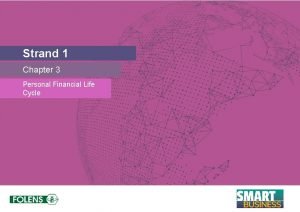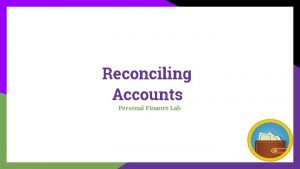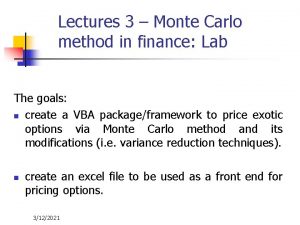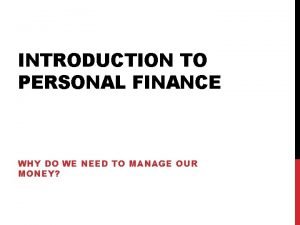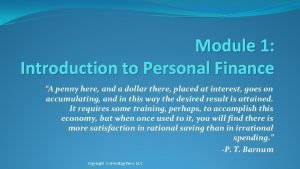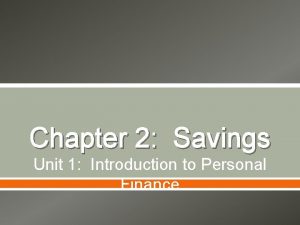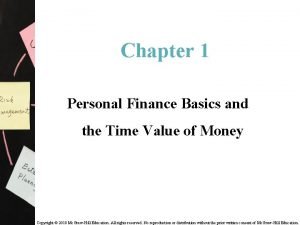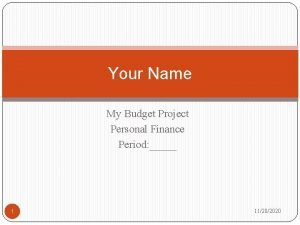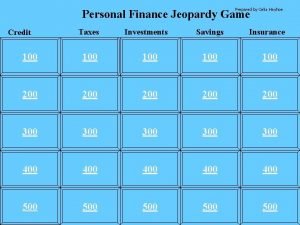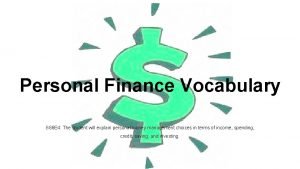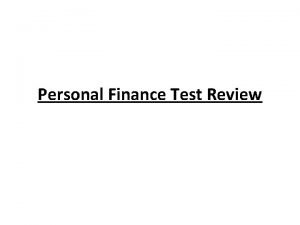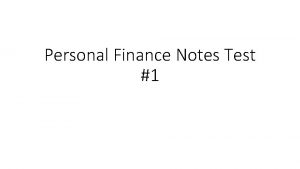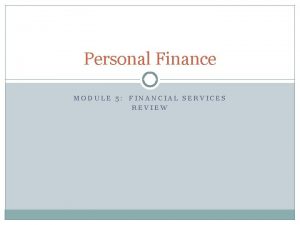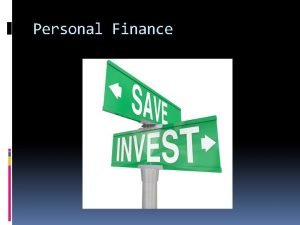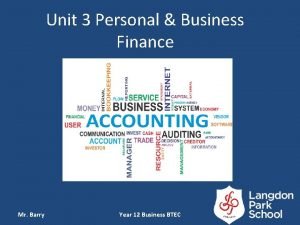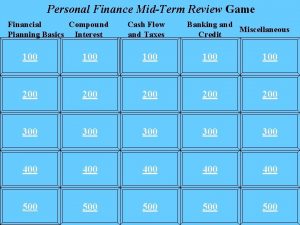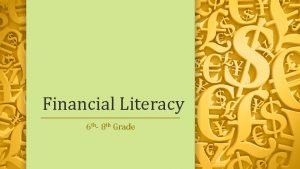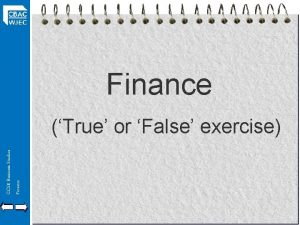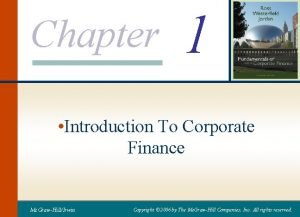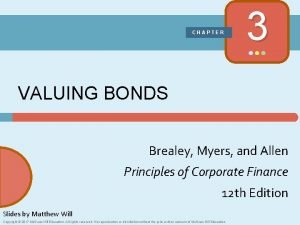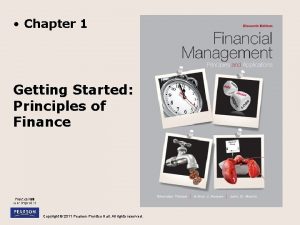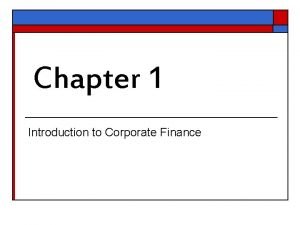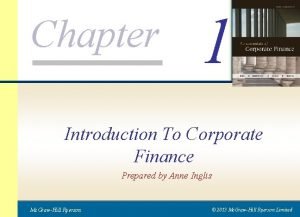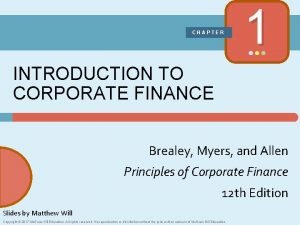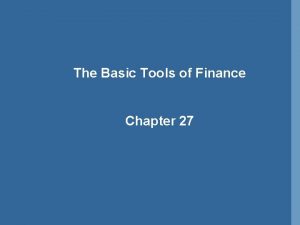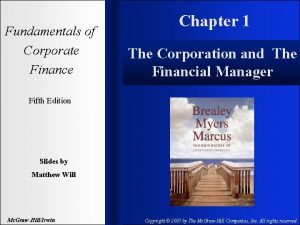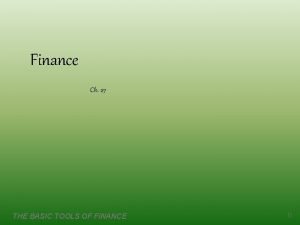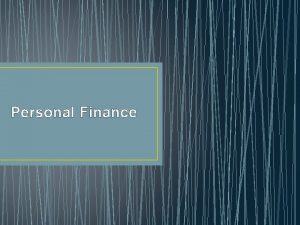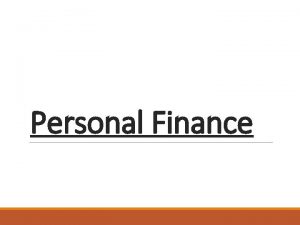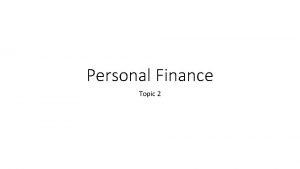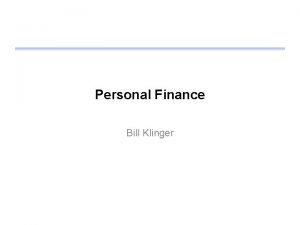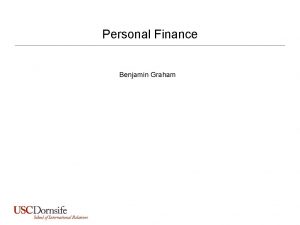Personal Finance Unit 3 Chapter 10 2007 GlencoeMc










































































- Slides: 74

Personal Finance Unit 3 Chapter 10 © 2007 Glencoe/Mc. Graw-Hill 0

Chapter 10 Bonds and Mutual Funds What You’ll Learn § Section 10. 1 § § Describe the characteristics of corporate bonds. Identify the reasons corporations sell bonds. Explain he reasons governments issue bonds. Identify the types of government bonds. § Section 10. 2 § why investors buy corporate bonds. § Discuss Identify sources of information for selecting bond investments. § Section 10. 3 § Identify types of mutual funds. § Section 10. 4 § Discuss sources of information for selecting mutual funds. § Describe the methods of buying and selling mutual funds. Personal Finance Unit 3 Chapter 10 © 2007 Glencoe/Mc. Graw-Hill 1

Mutual Funds § Q: I have about $50 a month to invest. What is a good investment choice for me? § A: Many mutual fund companies offer systematic investment programs in which you invest the same amount each month regardless of changes in the share price. As a result, your money buys more shares when prices are low and fewer shares when prices are high. Over time, this strategy can result in a lower average cost per share; however, it does not guarantee a profit or protect against a loss. Go to finance 07. glencoe. com to complete the Standard & Poor’s Financial Focus activity. Personal Finance Unit 3 Chapter 10 © 2007 Glencoe/Mc. Graw-Hill 22

Section 10. 1 Corporate and Government Bonds Main Idea What do you think government bonds are? Understanding bonds and why they are bought and sold will give you more choices to consider when investing your money. Personal Finance Unit 3 Chapter 10 © 2007 Glencoe/Mc. Graw-Hill 33

Section 10. 1 Corporate and Government Bonds maturity date the date when a bond will be repaid face value the dollar amount that the bondholder will receive at the bond’s maturity Corporate Bonds A corporate bond is a corporation’s written pledge to repay a bondholder a specified amount of money with interest. At the maturity date, you: § Cash in the bond § Receive a check in the amount of the bond’s face value The bond’s interest rate, maturity date, and face value are stated on the bond. Personal Finance Unit 3 Chapter 10 © 2007 Glencoe/Mc. Graw-Hill 4

Section 10. 1 Corporate and Government Bonds Types of Corporate Bonds There are several types of corporate bonds, including: § Debentures § Mortgage bonds § Subordinated debentures § Convertible bonds Personal Finance Unit 3 Chapter 10 © 2007 Glencoe/Mc. Graw-Hill 5

Section 10. 1 Corporate and Government Bonds debenture a bond that is backed only by the reputation of the issuing corporation, rather than by its assets Debentures Most corporate bonds are debentures. Investors buy this type of bond because they: § Believe that the company that issues them is on solid financial ground § Expect the company to repay the face value of the bond and make interest payments until the bond matures Personal Finance Unit 3 Chapter 10 © 2007 Glencoe/Mc. Graw-Hill 6

Section 10. 1 Corporate and Government Bonds mortgage bond a bond that is backed by assets of a corporation Mortgage Bonds To make bonds more appealing to conservative investors, a corporation may also issue mortgage bonds. Mortgage bonds: § Are a safer investment than a debenture because they are backed by corporate assets § Can be sold to repay the mortgage bondholders if the corporation fails to make good on its bonds Mortgage bonds usually earn less interest than debentures because their risk to the investor is lower. Personal Finance Unit 3 Chapter 10 © 2007 Glencoe/Mc. Graw-Hill 7

Section 10. 1 Corporate and Government Bonds Subordinated Debentures A subordinated debenture: § Is a type of unsecured bond § Gives bondholders a claim to interest payments and assets of the company only after all other bondholders have been paid Because subordinated debentures are more risky than other bonds, investors who buy them usually receive higher interest rates than other bondholders. Personal Finance Unit 3 Chapter 10 © 2007 Glencoe/Mc. Graw-Hill 8

Section 10. 1 Corporate and Government Bonds convertible bond a bond that an investor can trade for shares of the corporation’s common stock Convertible Bonds You may also choose to invest in convertible bonds. These types of bonds: § Offer unique flexibility to investors § Often have an interest rate that is 1 to 2 percent lower than interest rates on other types of corporate bonds Personal Finance Unit 3 Chapter 10 © 2007 Glencoe/Mc. Graw-Hill 9

A CORPORATE BOND Mobil Corporation issued this bond with an interest rate of 8. 5 percent. What is the face value of this bond? Personal Finance Unit 3 Chapter 10 © 2007 Glencoe/Mc. Graw-Hill 10

Section 10. 1 Corporate and Government Bonds Methods Corporations Use to Repay Bonds Today, most corporate bonds have a call feature that allows a corporation to buy back bonds from bondholders before the maturity date. Corporations may get the money to call a bond by: § Selling stock § Using profits § Selling new bonds at a lower interest rate Personal Finance Unit 3 Chapter 10 © 2007 Glencoe/Mc. Graw-Hill 11

Section 10. 1 Corporate and Government Bonds sinking fund a fund to which a corporation makes deposits for the purpose of paying back a bond issue serial bonds issued at the same time but which mature on different dates Calling Back Bonds To ensure that it has enough funds to pay off a bond issue, a company may: § Set up a sinking fund § Issue serial bonds When a company calls back its bonds, it may have to pay bondholders a premium, which is an additional amount above the face value of the bond. Personal Finance Unit 3 Chapter 10 © 2007 Glencoe/Mc. Graw-Hill 12

Section 10. 1 Corporate and Government Bonds Why Corporations Sell Bonds Corporations sell bonds to: § Raise money when it is difficult or impossible to sell stock § Finance regular business activities § Reduce the amount of tax a corporation must pay because the interest paid to bondholders is tax-deductible If a corporation files for bankruptcy, bondholders’ claims to assets are paid before the claims of stockholders. Personal Finance Unit 3 Chapter 10 © 2007 Glencoe/Mc. Graw-Hill 13

Section 10. 1 Corporate and Government Bonds Why Investors Buy Corporate Bonds Although stocks have historically resulted in greater profits than bonds, many people invest in bonds because: § Bonds are safe investments. § Most bonds provide interest income. § Bonds may increase in value, depending on the bond market, overall interest rates in the economy, and the reputation and assets of the issuer. § The face value of a bond is repaid when it reaches maturity. Personal Finance Unit 3 Chapter 10 © 2007 Glencoe/Mc. Graw-Hill 14

Savings Mind-Set It is exciting when you get a raise or finally pay off a loan. You know you have more money available. Be a smart saver—stick to your current budget and stash that newfound money in your savings or investment account. If you received a $30 per week raise in net pay and were paid four times per month, how much “extra” money would you have in ten months from February to November? Would you save or invest that money? Why or why not? Personal Finance Unit 3 Chapter 10 © 2007 Glencoe/Mc. Graw-Hill 15 15

Section 10. 1 Corporate and Government Bonds Interest Income Bondholders usually receive interest payments every six months. The method used by a company to pay you interest depends on the type of corporate bond you purchase. These bond types include: § Registered bond § Coupon bond § Bearer bond § Zero-coupon bond Personal Finance Unit 3 Chapter 10 © 2007 Glencoe/Mc. Graw-Hill 16

Section 10. 1 Corporate and Government Bonds registered bond a bond registered in the owner’s name by the company that issues the bond coupon bond a bond that is registered in the owner’s name for only the face value and not for interest Registered Bonds and Coupon Bonds Interest checks for registered bonds are mailed directly to the bondholder. Only the owner can collect money from these bonds. A registered coupon bond comes with detachable coupons. With this type of bond: § Only the bond’s owner can collect the face value. § Anyone who holds the coupons can collect the interest. Personal Finance Unit 3 Chapter 10 © 2007 Glencoe/Mc. Graw-Hill 17

Section 10. 1 Corporate and Government Bonds bearer bond a bond that is not registered in the investor’s name zero-coupon bond a bond that does not produce interest payments Bearer Bonds and Zero-Coupon Bonds Anyone who has physical possession of a bearer bond and its coupon can collect interest payments on it. Bearer bonds are no longer issued by corporations. A zero-coupon bond: § Is sold at a price far below its face value § Is redeemed for its full face value at maturity Because you buy it for less than its face value, you automatically make a profit when your zerocoupon bond is repaid. Personal Finance Unit 3 Chapter 10 © 2007 Glencoe/Mc. Graw-Hill 18

Section 10. 1 Corporate and Government Bonds Maturity Value of a Bond The market value of a corporate bond may fluctuate before its maturity date. A bond’s value can be affected by: § The financial condition of the company that issues it § Changes in the economy § The law of supply and demand Personal Finance Unit 3 Chapter 10 © 2007 Glencoe/Mc. Graw-Hill 19

Section 10. 1 Corporate and Government Bonds Repayment at Maturity Corporate bonds are repaid at maturity. After you purchase a bond, you can choose to: § Keep the bond until its maturity date and then cash it in. § Sell the bond at any time to another investor. In either case, the value of the bond is closely tied to the corporation’s ability to repay it. Personal Finance Unit 3 Chapter 10 © 2007 Glencoe/Mc. Graw-Hill 20

Section 10. 1 Corporate and Government Bonds A Typical Bond Transaction Most bonds are sold through: § Full-service brokerage firms § Discount brokerage firms § Online You can also buy corporate bonds directly from account executives or brokerage firms. Personal Finance Unit 3 Chapter 10 © 2007 Glencoe/Mc. Graw-Hill 21

Section 10. 1 Corporate and Government Bonds Purchasing in Primary and Secondary Markets Bonds are purchased in the same way as stocks. Corporate bonds may be purchased in: § Primary markets § Secondary markets Corporate bonds issued by large companies are traded on the New York Bond Exchange and American Bond Exchange. Personal Finance Unit 3 Chapter 10 © 2007 Glencoe/Mc. Graw-Hill 22

Section 10. 1 Corporate and Government Bonds and Securities Bonds are sold by: § Private corporations § The federal government § State and local governments The federal government sells bonds and other securities to: § Help fund its regular activities and services § Finance the national debt Personal Finance Unit 3 Chapter 10 © 2007 Glencoe/Mc. Graw-Hill 23

Section 10. 1 Corporate and Government Bonds Treasury Bills, Notes, and Bonds The U. S. Department of the Treasury issues three basic types of securities: § Treasury bills (T-bills) § Treasury notes § U. S. government savings bonds U. S. government security bonds can be: § Held until maturity § Cashed before the maturity date You must pay federal income tax on interest you receive from these investments. Personal Finance Unit 3 Chapter 10 © 2007 Glencoe/Mc. Graw-Hill 24

Section 10. 1 Corporate and Government Bonds Issued by Federal Agencies Bonds are issued by other federal agencies as well. While agency bonds are almost risk-free, they: § Offer a slightly higher interest rate than securities issued by the treasury department § Have an average maturity of about 12 years Personal Finance Unit 3 Chapter 10 © 2007 Glencoe/Mc. Graw-Hill 25

Section 10. 1 Corporate and Government Bonds municipal bond a security issued by a state or local government to pay for its ongoing activities Bonds Issued by State and Local Governments Municipal bonds may pay for major projects, such as the building of: § Airports § Schools § Highways Although municipal bonds are relatively safe, on rare occasions, governments have defaulted, or failed to repay, their bonds. Personal Finance Unit 3 Chapter 10 © 2007 Glencoe/Mc. Graw-Hill 26

Section 10. 1 Corporate and Government Bonds Insured Municipal Bonds If the risk of default worries you, you might consider buying insured municipal bonds. Three large private investors guarantee such bonds: § MBIA, Inc. § The Financial Security Assurance Corporation § The American Municipal Bond Assurance Corporation Personal Finance Unit 3 Chapter 10 © 2007 Glencoe/Mc. Graw-Hill 27

Section 10. 2 Investing in Bonds Main Idea Do you think buying government bonds would free you from watching your investments? Knowing how to read, analyze, and calculate bond information in newspapers and annual reports can help you make wise investments. Personal Finance Unit 3 Chapter 10 © 2007 Glencoe/Mc. Graw-Hill 28 28

Section 10. 2 Investing in Bonds Determining Investment Value Before you make a decision to include bonds in your investment portfolio, you must learn how to accurately determine the investment value of a bond. You will be able to determine whether a bond is a good investment by: § Understanding bond price quotations § Researching various sources of information on bonds § Checking bond ratings § Calculating the yield of your bond investment Personal Finance Unit 3 Chapter 10 © 2007 Glencoe/Mc. Graw-Hill 29

Section 10. 2 Investing in Bonds Bond Price Quotations Before you buy or sell bonds, you should become familiar with bond price quotations. Some valuable sources for bond information are: § Local newspapers § Metropolitan newspapers § The Wall Street Journal § Barron’s Personal Finance Unit 3 Chapter 10 © 2007 Glencoe/Mc. Graw-Hill 30

Section 10. 2 Investing in Bonds Sources of Information on Bonds As a bondholder, you should always be aware of the financial stability of the issuer of your bonds. The most important questions are: § Will the bond be repaid at maturity? § Will you receive interest payments until maturity? Annual reports provide detailed financial information about a company. Personal Finance Unit 3 Chapter 10 © 2007 Glencoe/Mc. Graw-Hill 31

Section 10. 2 Investing in Bonds Annual Reports As you read an annual report, look for signs of financial strength or weakness and ask: § Is the firm profitable? § Are sales increasing? § Are long-term liabilities increasing? § How might the company’s current activities and future plans affects its ability to repay bonds? Personal Finance Unit 3 Chapter 10 © 2007 Glencoe/Mc. Graw-Hill 32

Section 10. 2 Investing in Bonds Other Sources of Information You can also research possible bond investments by: § Reading business magazines § Consulting reports and research published by the government to track the nation’s economy § Searching the Internet for information about the financial performance of particular companies Personal Finance Unit 3 Chapter 10 © 2007 Glencoe/Mc. Graw-Hill 33

Section 10. 2 Investing in Bonds investmentgrade bonds that are issued by financially stable companies or municipalities Bond Ratings Before you invest in a particular corporate or municipal bond, you should check its rating. This rating will give you a good idea of the quality and risk associated with that bond. The highest category of bonds, investmentgrade bonds, are considered safe investments that will provide a predictable source of income. Personal Finance Unit 3 Chapter 10 © 2007 Glencoe/Mc. Graw-Hill 34

Section 10. 2 Investing in Bonds yield the rate of return, usually stated as a percentage, earned by an investor who holds a bond for a certain period of time Yield of a Bond Investment To determine the return that a particular bond may produce, investors calculate and track its yield. You can measure a bond’s yield by: § Calculating its current yield § Considering the yield to maturity of a bond These calculations allow you to compare returns on a bond investment with other investments. Personal Finance Unit 3 Chapter 10 © 2007 Glencoe/Mc. Graw-Hill 35

Section 10. 3 Mutual Funds Main Idea Based on its name, what do you think is the definition of a mutual fund? Understanding the many kinds of mutual funds will help you decide which funds might be smart investments for you. Personal Finance Unit 3 Chapter 10 © 2007 Glencoe/Mc. Graw-Hill 36 36

Section 10. 3 Mutual Funds Defining Mutual Funds A mutual fund is an investment alternative in which investors use the services of professional managers to pool their money to buy: § Stocks § Bonds § Other securities By buying shares in a mutual fund, even an investor with limited resources can own part of an entire portfolio of diverse securities. Personal Finance Unit 3 Chapter 10 © 2007 Glencoe/Mc. Graw-Hill 37

Section 10. 3 Mutual Funds Why Investors Buy Mutual Funds Reasons for purchasing a mutual fund include: § Professional management § Diversification § Reduction of shareholders’ risk Because of these advantages, mutual funds have become extremely popular investments. Personal Finance Unit 3 Chapter 10 © 2007 Glencoe/Mc. Graw-Hill 38

Section 10. 3 Mutual Funds Types of Mutual Funds An investment company is a firm that invests the pooled funds of many investors in various securities. The firm receives a fee for this service. Mutual funds managed by investment companies are classified as: § Closed-end funds § Open-end funds Personal Finance Unit 3 Chapter 10 © 2007 Glencoe/Mc. Graw-Hill 39

Section 10. 3 Mutual Funds closed-end fund a mutual fund with a fixed number of shares that are issued by an investment company when the fund is first organized Closed-End Funds About 6 percent of all mutual funds are closedend funds offered by investment companies. Shares of closed-end funds are traded: § On the floors of stock exchanges § In the over-the-counter market Personal Finance Unit 3 Chapter 10 © 2007 Glencoe/Mc. Graw-Hill 40

Section 10. 3 Mutual Funds open-end fund a mutual fund with an unlimited number of shares that are issued and redeemed by an investment company at the investors’ request net asset value (NAV) the amount that one share of a mutual fund is worth Open-End Funds Most mutual funds are open-end funds. Shares of open-end funds can be: § Bought and sold on any business day by contacting the investment company that manages the mutual fund § Bought and sold at the net asset value (NAV) If you buy shares of an open-end fund from an investment company, you gain access to a wide variety of services. Personal Finance Unit 3 Chapter 10 © 2007 Glencoe/Mc. Graw-Hill 41

Section 10. 3 Mutual Funds load fund a mutual fund for which you pay a commission every time you buy or sell shares Load Funds Mutual funds are classified as either: § Load funds § No-load funds The advantage of a load fund is that the fund’s representatives will offer advice and guidance about when shares of the fund should be bought or sold. Personal Finance Unit 3 Chapter 10 © 2007 Glencoe/Mc. Graw-Hill 42

Section 10. 3 Mutual Funds no-load fund a mutual fund that has no commission fee No-Load Funds No-load funds: § Do not charge commissions when you buy shares § Have no salespeople § Offer the same investment opportunities as load funds Personal Finance Unit 3 Chapter 10 © 2007 Glencoe/Mc. Graw-Hill 43

Section 10. 3 Mutual Funds Management Fees and Other Charges Management fees are a fixed percentage of the fund’s asset value. Instead of charging investors a fee when they purchase shares, some mutual funds charge: § A back-end load, a fee that is charged for withdrawing money from the fund § A 12 b-1 fee, a fee that helps to pay for the marketing and advertising of a mutual fund Personal Finance Unit 3 Chapter 10 © 2007 Glencoe/Mc. Graw-Hill 44

Section 10. 3 Mutual Funds Categories of Mutual Funds It can be helpful to sort mutual funds into three main groups: § Stock mutual funds § Bond mutual funds § Mixed mutual funds The managers of mutual funds match their investment portfolios to the investment objectives of their customers. Personal Finance Unit 3 Chapter 10 © 2007 Glencoe/Mc. Graw-Hill 45

Section 10. 3 Mutual Funds Stock Mutual Funds Most mutual funds are part of the stock mutual funds group. These funds fall into 14 categories, which include: § Aggressive growth funds § Equity income funds § Global stock funds § Growth and income funds § International funds § Large-cap funds § Regional funds § Utility funds Personal Finance Unit 3 Chapter 10 © 2007 Glencoe/Mc. Graw-Hill 46

Section 10. 3 Mutual Funds Bond Mutual Funds Mutual funds in the bond mutual funds group invest only in bonds. The bond fund categories are based on the type of bond the mutual funds purchase and include the following: § High-yield (junk) bond funds § Insured municipal bond funds § Intermediate corporate bond funds § Long-term U. S. bond funds § Municipal bond funds § Short-term corporate bond funds Personal Finance Unit 3 Chapter 10 © 2007 Glencoe/Mc. Graw-Hill 47

Section 10. 3 Mutual Funds Mixed mutual funds invest in a mix of stocks and bonds or in various other types of securities. These funds fall into three categories: § Balanced funds § Money-market funds § Stock/bond blend funds A variety of mutual funds managed by one investment company is called a family of funds. Personal Finance Unit 3 Chapter 10 © 2007 Glencoe/Mc. Graw-Hill 48

Section 10. 4 Investing in Mutual Funds Main Idea What would be your definition of capital gain? Knowing how to evaluate, buy, and sell mutual funds will enable you to invest wisely. Video Clip: Dollars and Sense Personal Finance Unit 3 Chapter 10 © 2007 Glencoe/Mc. Graw-Hill 49 49

Section 10. 4 Investing in Mutual Funds Making an Informed Decision You will be able to determine the best approach for investing in mutual funds by: § Considering your financial goals § Consulting various sources of information on mutual funds Personal Finance Unit 3 Chapter 10 © 2007 Glencoe/Mc. Graw-Hill 50

Section 10. 4 Investing in Mutual Funds Considering Your Financial Goals You can consider several questions when you are in the process of identifying your investment goals: § How old are you? § What is your family situation? § How much risk do you want to take? § How much money do you make now? § How much money are you likely to make in the future? Once you know your investment goals, find a mutual fund with investment objectives that match your own. Personal Finance Unit 3 Chapter 10 © 2007 Glencoe/Mc. Graw-Hill 51

Section 10. 4 Investing in Mutual Funds Information on Mutual Funds The main sources of information on mutual funds include: § Newspapers § Financial publications § Professional advice § Quotations § Prospectuses § Annual reports § Internet Personal Finance Unit 3 Chapter 10 © 2007 Glencoe/Mc. Graw-Hill 52

Section 10. 4 Investing in Mutual Funds Mutual Fund Quotations Mutual fund quotations contain information about a fund’s: § Net asset value § Objective § Performance § Cost Personal Finance Unit 3 Chapter 10 © 2007 Glencoe/Mc. Graw-Hill 53

Section 10. 4 Investing in Mutual Funds Mutual Fund Prospectuses After you have narrowed your search, check out the prospectuses of the mutual funds that most interest you. The prospectus usually provides the following information: § A description of the fund’s objective § The risk factor associated with the fund § A fee table § A description of the fund’s past performance § A description of services provided to investors Personal Finance Unit 3 Chapter 10 © 2007 Glencoe/Mc. Graw-Hill 54

Section 10. 4 Investing in Mutual Funds Annual Reports Most annual reports contain: § Detailed financial information about the fund’s assets and liabilities § A statement of operations that describes expenses and day-to-day operating costs of the fund, a statement of changes in net assets, and a schedule of investments § A letter from the fund’s independent auditors Personal Finance Unit 3 Chapter 10 © 2007 Glencoe/Mc. Graw-Hill 55

Section 10. 4 Investing in Mutual Funds income dividends the earnings a fund pays to shareholders Return on Investment As a mutual fund shareholder, you may gain income in one of three ways. You may: § Receive income dividends. § Earn capital gain distributions. § Make a good return by buying shares at a low price and then selling them after the price increases. Personal Finance Unit 3 Chapter 10 © 2007 Glencoe/Mc. Graw-Hill 56

Section 10. 4 Investing in Mutual Funds Taxes and Mutual Funds The following are some general guidelines on how mutual fund transactions are taxed: § Income dividends are reported along with all other dividend amounts you have received. They are taxed as regular income. § Capital gain distributions are reported on your federal income tax return. § Capital gains or losses that result from your selling shares in a mutual fund are reported on your federal income tax return. Personal Finance Unit 3 Chapter 10 © 2007 Glencoe/Mc. Graw-Hill 57

Section 10. 4 Investing in Mutual Funds Taxing Mutual Funds When you pay taxes on your mutual funds, you should be aware that: § Almost all investment companies allow you to reinvest the capital gains distributions and income dividends you earn instead of receiving cash. § You decide when to sell your stocks or bonds. Thus, you can pick the tax year when you pay tax or deduct losses on these investments. You have no control, however, over when the mutual fund sells securities. Personal Finance Unit 3 Chapter 10 © 2007 Glencoe/Mc. Graw-Hill 58

Section 10. 4 Investing in Mutual Funds Buying and Selling Mutual Funds Mutual funds can provide investors with: § Income dividends § Capital gain distributions § Profits that result from investors’ decision to sell their shares Various purchase options and withdrawal options allow you to manage your mutual fund investments and profits to help you meet your financial goals. Personal Finance Unit 3 Chapter 10 © 2007 Glencoe/Mc. Graw-Hill 59

Section 10. 4 Investing in Mutual Funds Purchase Options Before you buy shares in a fund, you will need to consider several different purchase options. When you buy shares in an open-end mutual fund from an investment company, you can choose: § Regular account transactions § Voluntary savings plans § Payroll deduction plans § Contractual savings plans § Reinvestment plans Personal Finance Unit 3 Chapter 10 © 2007 Glencoe/Mc. Graw-Hill 60

Section 10. 4 Investing in Mutual Funds Withdrawal Options If you choose to invest in mutual funds, you will also need to know how you can take your money out of a fund. Your withdrawal options include: § Selling shares of closed-end funds to another investor § Selling shares in an open-end fund to the investment company that sponsors the fund Personal Finance Unit 3 Chapter 10 © 2007 Glencoe/Mc. Graw-Hill 61

Section 10. 4 Investing in Mutual Funds Withdrawing Money from Mutual Funds Additional ways of withdrawing money include: § Investment period withdrawal § Investment period liquidation § Asset growth withdrawal § Dividend and distribution withdrawal Personal Finance Unit 3 Chapter 10 © 2007 Glencoe/Mc. Graw-Hill 62

Chapter 10 Bonds and Mutual Funds Key Term Review § § § maturity date face value debenture mortgage bond convertible bond sinking fund serial bonds registered bond coupon bond bearer bond zero-coupon bond § § § § § municipal bond investment-grade bonds yield closed-end fund open-end fund net asset value (NAV) load fund no-load fund income dividends Personal Finance Unit 3 Chapter 10 © 2007 Glencoe/Mc. Graw-Hill 63

Chapter 10 Bonds and Mutual Funds Reviewing Key Concepts 1. Explain the advantages of the call feature on bonds to corporations and to investors. A corporation may choose to buy back its bonds early when interest rates drop a certain percentage to keep from paying bondholders interest at the higher rate. When a company calls its bonds, it may have to pay bondholders a premium. Personal Finance Unit 3 Chapter 10 © 2007 Glencoe/Mc. Graw-Hill 64

Chapter 10 Bonds and Mutual Funds Reviewing Key Concepts 2. Explain why corporations may prefer to issue bonds to raise funds for their operations. Corporations sell bonds to: § Raise money when it is difficult or impossible to sell stock § Finance regular business activities § Reduce the amount of tax a corporation must pay because the interest paid to bondholders is taxdeductible Personal Finance Unit 3 Chapter 10 © 2007 Glencoe/Mc. Graw-Hill 65

Chapter 10 Bonds and Mutual Funds Reviewing Key Concepts 3. Explain how the market value of a bond is determined. A bond’s value can be affected by: § The financial condition of the company that issues it § Changes in the economy § The law of supply and demand Personal Finance Unit 3 Chapter 10 © 2007 Glencoe/Mc. Graw-Hill 66

Chapter 10 Bonds and Mutual Funds Reviewing Key Concepts 4. List three examples of reasons state and local governments might issue bonds. The federal government sells bonds and other securities to: § Help fund its regular activities and services § Finance the national debt Municipal bonds may pay for major projects, such as the building of: § Airports § Schools § Highways Personal Finance Unit 3 Chapter 10 © 2007 Glencoe/Mc. Graw-Hill 67

Chapter 10 Bonds and Mutual Funds Reviewing Key Concepts 5. Describe the characteristics of a municipal bond, including tax factors. A municipal bond is a security issued by a state or local government to pay for its ongoing activities. The interest on municipal bonds may be exempt from federal taxes. Tax-exempt status depends on how the funds generated by the bonds are used. Personal Finance Unit 3 Chapter 10 © 2007 Glencoe/Mc. Graw-Hill 68

Chapter 10 Bonds and Mutual Funds Reviewing Key Concepts 6. Explain the meaning of bond rating and their impact on buying decisions. Before you invest in a particular corporate or municipal bond, you should check its rating. This rating will give you a good idea of the quality and risk associated with that bond. Personal Finance Unit 3 Chapter 10 © 2007 Glencoe/Mc. Graw-Hill 69

Chapter 10 Bonds and Mutual Funds Reviewing Key Concepts 7. Describe the characteristics of a closed-end, open-end, load, and no-load mutual fund. A closed-end fund is a mutual fund with a fixed number of shares that are issued by an investment company when the fund is first organized. An open-end fund is a mutual fund with an unlimited number of shares that are issued and redeemed by an investment company at the investors’ request. A load fund is a mutual fund for which you pay a commission every time you buy or sell shares. A no-load fund is a mutual fund that has no commission fee. Personal Finance Unit 3 Chapter 10 © 2007 Glencoe/Mc. Graw-Hill 70

Chapter 10 Bonds and Mutual Funds Reviewing Key Concepts 8. Describe a mutual fund prospectus. The prospectus usually provides the following information: § A description of the fund’s objective § The risk factor associated with the fund § A fee table § A description of the fund’s past performance § A description of services provided to investors Personal Finance Unit 3 Chapter 10 © 2007 Glencoe/Mc. Graw-Hill 71

Chapter 10 Bonds and Mutual Funds Reviewing Key Concepts 9. Compare three ways you can purchase mutual funds. When you buy shares in an open-end mutual fund from an investment company, you can choose: § Regular account transactions § Voluntary savings plans § Payroll deduction plans § Contractual savings plans § Reinvestment plans Personal Finance Unit 3 Chapter 10 © 2007 Glencoe/Mc. Graw-Hill 72

Newsclip: Reliable Bonds? A bond fund is a mutual fund comprised mainly of bonds. These types of funds are usually safe investments with greater opportunity for returns. Log On Go to finance 07. glencoe. com and open Chapter 10. Learn more about the different types of bond funds. Write a list of points you have learned about bond funds. Would you invest in a bond fund. Why or why not? Personal Finance Unit 3 Chapter 10 © 2007 Glencoe/Mc. Graw-Hill 73
 Personal and business finance
Personal and business finance Llc advantages and disadvantages
Llc advantages and disadvantages Principles of business and finance
Principles of business and finance Personal finance unit 1 review
Personal finance unit 1 review Describe factors that affect your potential earning power
Describe factors that affect your potential earning power Unit 3 personal and business finance
Unit 3 personal and business finance Unit 2 lesson 12 interest rates
Unit 2 lesson 12 interest rates Chapter 2 personal finance
Chapter 2 personal finance Chapter 8 personal finance
Chapter 8 personal finance Foundations in personal finance answers chapter 1
Foundations in personal finance answers chapter 1 Chapter 8 personal finance
Chapter 8 personal finance Chapter 4 post test personal finance
Chapter 4 post test personal finance Chapter 1 post test personal finance
Chapter 1 post test personal finance Overview of personal finance chapter 1
Overview of personal finance chapter 1 Personal finance module 4 test answers
Personal finance module 4 test answers Personal finance gcse
Personal finance gcse Mypersonalfinancelab
Mypersonalfinancelab Personal finance lab
Personal finance lab Personal finance lab
Personal finance lab Life cycle personal financial planning
Life cycle personal financial planning Personal finance lab
Personal finance lab Personal finance bell ringers
Personal finance bell ringers Personal finance assignment
Personal finance assignment Personal finance lab
Personal finance lab Personal finance lab
Personal finance lab Personal finance module
Personal finance module Glencoe personal finance
Glencoe personal finance The five foundations of personal finance
The five foundations of personal finance Personal finance basics and the time value of money
Personal finance basics and the time value of money Personal finance budget project
Personal finance budget project Personal finance jeopardy
Personal finance jeopardy Financial vocabulary for students
Financial vocabulary for students Personal finance test 1
Personal finance test 1 Personal finance project
Personal finance project Personal finance notes
Personal finance notes Personal finance module
Personal finance module Principles of personal finance
Principles of personal finance Personal finance final exam review
Personal finance final exam review Personal business finance
Personal business finance Solar open assess
Solar open assess True or false personal finance questions
True or false personal finance questions Personal finance midterm
Personal finance midterm Next generation personal finance standards
Next generation personal finance standards Ja personal finance
Ja personal finance Glencoe business and personal finance
Glencoe business and personal finance Next generation personal finance standards
Next generation personal finance standards Gross profit margin gcse
Gross profit margin gcse Geographic trends definition personal finance
Geographic trends definition personal finance Unit 10, unit 10 review tests, unit 10 general test
Unit 10, unit 10 review tests, unit 10 general test Economics unit 3 lesson 7
Economics unit 3 lesson 7 Entrepreneurship unit 3
Entrepreneurship unit 3 Unit 9 raising finance
Unit 9 raising finance Forma no personal gerundio
Forma no personal gerundio Aseo personal adivinanzas de la higiene personal
Aseo personal adivinanzas de la higiene personal Pansariling pahayag
Pansariling pahayag Fundamentals of corporate finance chapter 6 solutions
Fundamentals of corporate finance chapter 6 solutions Chapter 1 introduction to corporate finance
Chapter 1 introduction to corporate finance Examples of agency problems
Examples of agency problems Principles of corporate finance chapter 3 solutions
Principles of corporate finance chapter 3 solutions Principle of finance chapter 1
Principle of finance chapter 1 Chapter 1 introduction to corporate finance
Chapter 1 introduction to corporate finance Chapter 1 introduction to corporate finance
Chapter 1 introduction to corporate finance Chapter 1 introduction to corporate finance
Chapter 1 introduction to corporate finance The basic tools of finance chapter 27
The basic tools of finance chapter 27 Fundamentals of corporate finance, chapter 1
Fundamentals of corporate finance, chapter 1 The basic tools of finance chapter 27
The basic tools of finance chapter 27 Using personal safety in agricultural mechanics
Using personal safety in agricultural mechanics Unit 3 personal qualities of a healthcare worker
Unit 3 personal qualities of a healthcare worker Ckla grade 5 unit 1 personal narratives
Ckla grade 5 unit 1 personal narratives Professionalism examples
Professionalism examples Metode pembiayaan langsung (direct financing method)
Metode pembiayaan langsung (direct financing method) Hyp opp adj triangle
Hyp opp adj triangle English system conversion
English system conversion Algebra 2 unit 1 test answers
Algebra 2 unit 1 test answers Contoh unit cost rekam medis
Contoh unit cost rekam medis

